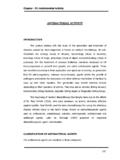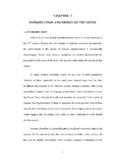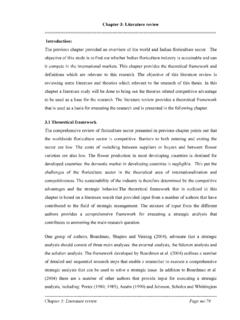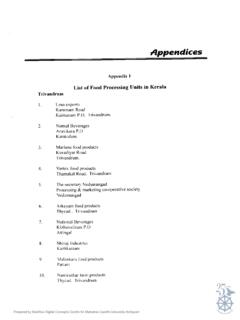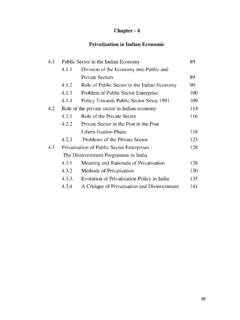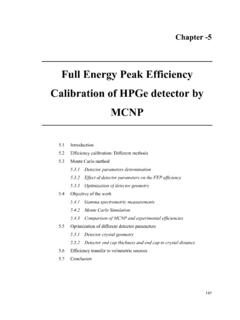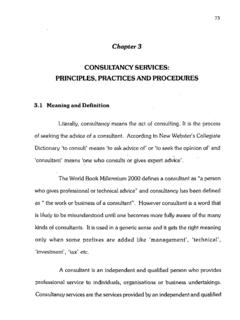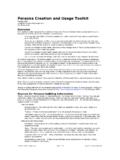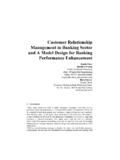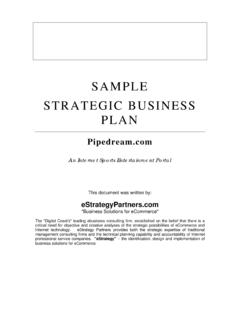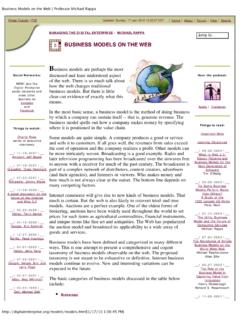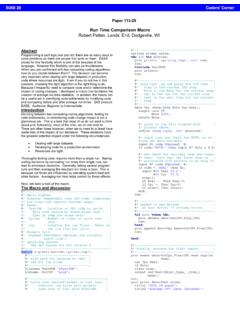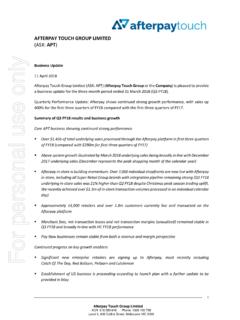Transcription of REVIEW OF LITERATURE - Shodhganga
1 REVIEW OF LITERATURE Many empirical studies have been conducted on the subject of Plastic Money in India and abroad. The major emphasis of research has been on various issues like frauds, security, usage pattern, new method of e-payment, etc. The previous work done on plastic money needs perusal. It has been reviewed to indicate in a general way the type of work done on this subject in India. It is expected that the critical examination of the studies would give focus to our problem and help to indicate the areas which have remained neglected at the hands of the researchers. From the REVIEW of LITERATURE , it was found that hardly there was a study which examined the perception of both users and traders on the usage of plastic money. Also, many studies concentrated on individual cards, for instance, credit or debit card and neglected the joint effect and new innovative cards like smart card, charge card and check card.
2 In this study, an attempt is made to include all types of cards in the analysis. Handelsman and Munson (1989), Switching behaviours from credit card to cash payment among ethnically diverse retail customers shows that the credit card sales constitute an important revenue source for many retailers. Their ever increasing use and evaluation into other forms, such as debit and electron cards, demands that retailers gain a more complete understanding of how they are used by diverse consumer segments. Particularly needed is a better understating of the propensity to switch over from credit card to cash payment and the incentive required to initiate switching. In view of the cost to the retailer of administering credit card payment systems, the retailer s overall profit position may be enhanced by converting a larger proportion of credit card sales to cash sales.
3 Four aspects of credit card usage and switching ethnicities are investigated, propensity to switch over from credit card to cash payment at various levels of monetary incentive, the effect of product price on propensity to switch, the frequency of credit card usage , and the preferred method of payment of credit card balances (installment versus full payment). Several significant differences are shown among the three ethnic groups studied (Anglo-American, Chinese-American and his panic-American) in these usage behaviours such differences might even be REVIEW of LITERATURE 32extended to international comparisons involving consumers domiciled in different countries. Barker (1992) in his study, Globalization of credit card usage : The case of a developing economy investigate the attitude of Turkish consumers towards credit cards, and the approach of card issuers by surveying two samples of 200 card holders and non-holders.
4 The better educated, middle aged members of the upper middle class seem to be the prime target; the most important reasons for using a credit card were case of payment , followed by risk of carrying cash , Non holders do not carry credit cards because they do not know much about it; informal sources of information appear to be more influential than mass media advertising in penetrating the market; proposes that the usage and the administration of credit cards are influenced very much by the infrastructure of the country and hence, credit card companies have to modify their marketing and administrative procedures rather than following a standardized approach. Natarajan and Manohar (1993) Credit Cards an Analysis . A study has been attempted to know that to what extent the credit cards are utilized by the cardholders and the factors influencing the utilization of credit cards.
5 The study is confined to cards issued by the Canara Bank. A random sampling technique is used to collect the data. Ten components numbers of purchases, shops, percentage of purchases, place, frequency, type of product, type of services, cash withdrawal facilities, add on facility, insurance schemes are identified and used for the measurement. Chi square test has been conducted to know the level of utilization. For this, both personal and non-personal factors also have been taken into consideration. Chi square test reveals that sex, age, educational qualification of card holders has no relationship with utilization of Can Card. While occupation, income, employment status of spouse, mode of getting card has relationship with utilization of Can Card. Vora and Gidwani (1993), Plastic at a premium show the usage facilities and varieties of cards.
6 The research shows that credit card is extremely useful to those people who use it as to increase their purchasing power through the plastic card. Different cards provide the different packages to attract the customers like tele-ticketing, discounts, insurance coverage and provide reward points etc. According to REVIEW of LITERATURE 33author, the card holders market has a potential to grow to 7 million, if all tax paying citizens are taken into account. But these manful efforts at upgrading services can only have a limited impact as long as the Indian customer remains credit shy. For this, they have to change their spending habits and keep their card active, so that a piece of plastic becomes a premium card in an effective way. Mathur and George (1994), Use of credit-cards by older American shows the usage behavior pattern of older people with credit card spending.
7 Using a large national sample of respondents from different age groups, finds that older adults use credit cards as frequently as younger adults when circumstances and opportunities for consumption in both groups are similar. Contrary to it, the commonly held belief that older people do not use credit cards, the data suggests the need for practitioners to stop thinking about consumer targets in terms of age and focus more on circumstances that determine one s likelihood to use credit cards. Factors such as income, employment, retirement status, shopping habits should be considered. While credit card usage may overall decline with age, certain segment of mature consumers continue making use of credit cards throughout the life. The data in the present study suggests alternative criteria like income and employment status, for appealing to mature Americans.
8 Targeting older consumers on the basis of age might not only alienate them but is also likely to reach fewer prospective customers. Simon and Victor (1994), Customers Risk Perceptions of Electronic Payment Systems finds that one reason for the slow adoption rate of electronic fund transfer at point-of-sale (EFTPoS) is that consumers perceive that EFTPoS has a higher level of risk than other traditional payment methods. Study shows that EFTPoS has the lowest physical risk and highest financial risk, the credit card has the lowest psychological risk and highest time loss risk, while cash has the highest physical risk and lowest performance risk. Physical risk, financial risk and time loss risk for cash payment are significantly higher when purchase is large while performance risk for EFTPoS and credit card payment is significantly higher when the purchase is small.
9 Users of EFTPoS have a significantly higher level of perceived financial and time loss risk than non-users, while non users have higher level of psychological risk. Article suggests that in order to reduce customer s fears and worries, it is also appropriate to consider REVIEW of LITERATURE 34introducing some risk reduction techniques. endorsements by key people in society (reducing psychological risk), money-back guarantee (reducing financial risk) and live demonstration and free trial (reducing time loss risk). Research indicates that technological excellence cannot dictate success; a good marketing mix, prompt service support, sufficient legal protection and educational efforts, etc. are also relevant. Almeida (1995), The Future in cards shows that credit card business is booming as more than million Indians have credit cards with them.
10 Their numbers are expected to grow at an even faster pace as issuing banks get aggressive. Studies show that more than 4000 business establishments in the country accept credit cards. The country now provides all the ingredients for a healthy credit cards industry: a rapidly expanding, increasingly acquisitive middle class, a growing yen for travel and entertainment sophisticated merchant establishment and greater transparency in financial system. Acquiring banks for business from merchant establishment has brought the commission down and if the issuing bank happens to be also the acquiring bank, it get the entire merchant discount. Finally, no payment system can ever replace cash in India on a wide spread basis. George (1995), The card majors lead the way shows that VISA and Master Card play a major role in any international payment system.
